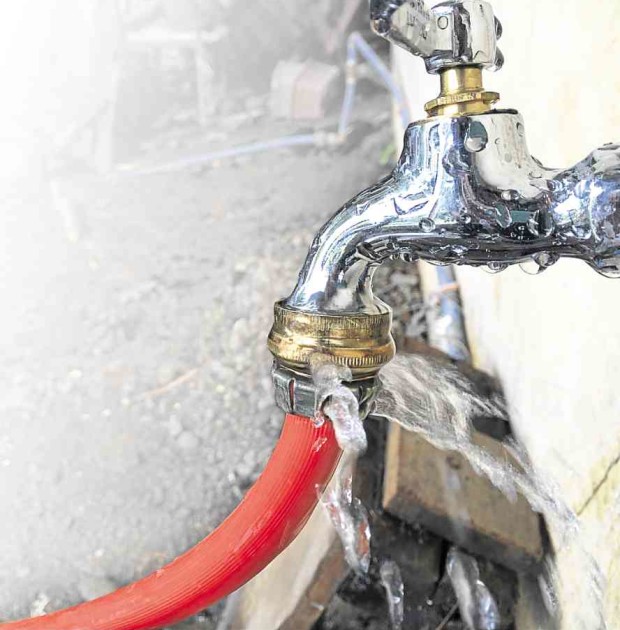Zambo water rationing ends

WATER is now running in faucets in Zamboanga City, like this one at the Regional Science High School in the village of San Roque. JULIE S. ALIPALA/INQUIRER MINDANAO
ZAMBOANGA CITY—Restaurants have stopped using plastic spoons and forks. Public toilets, locked for months, are open again.
These are just some of the signs that life in the city, as far as its supply of water is concerned, is returning to normal.
Residents have the weather to thank for. The advent of the rainy season ended four months of crisis that led to water rationing.
The water rationing scheme, carried out by the Zamboanga City Water District (ZCWD), started in February as the city’s water sources started to dry up.
But water rationing brought with it a host of other problems, like diseases and crop losses.
Article continues after this advertisementThe crisis grew, prompting Church officials to call for oratio imperata or urgent prayers to bring rains.
Article continues after this advertisementThe prayers were answered. Early this week, ZCWD announced it was ending the water rationing scheme, except for the one being implemented in so-called transitory sites where at least 2,000 families displaced by the 2013 siege of the city by followers of Moro leader Nur Misuari are still languishing.
Nenita Paule, a mother of six, recounted the ways her family coped with the rationing scheme, including giving up bathing just to have water to drink.
“It’s been like five months of dryness,” said Paule. “Now my children can enjoy a real bath.”
Several restaurants in the city coped with the rationing by using disposable plates and cutlery. They have since returned to using chinaware as the rationing ended.
“We already have flowing water,” said Raymond, a waiter in one of the restaurants near City Hall.
Public toilets, which had been locked for the duration of the rationing scheme, opened anew.
Teotimo Reyes, of ZCWD’s water production department, said the advent of rains helped raise water level in the utility’s dam. Water level in the dam has returned to 74.40 meters, which is normal, said Reyes.
Reyes said only the transitory sites for evacuees were without regular supply of water.
“There is no water system or connection there so we need to deliver water regularly,” he said.
Maribel Enriquez, chief meteorologist of the Philippine Atmospheric, Geophysical and Astronomical Services Administration here, said the rains that fell on the city were effects of a series of intertropical convergence zones affecting Mindanao.
Enriquez, however, said the effects of El Niño were still being felt.
Volume of rain, she said, has not reached the normal
149 mm for the month of June.
Enriquez said the normal volume of rainfall was likely to be achieved by July which would mean “we are totally out of the dry spell.” Julie Alipala, Inquirer Mindanao